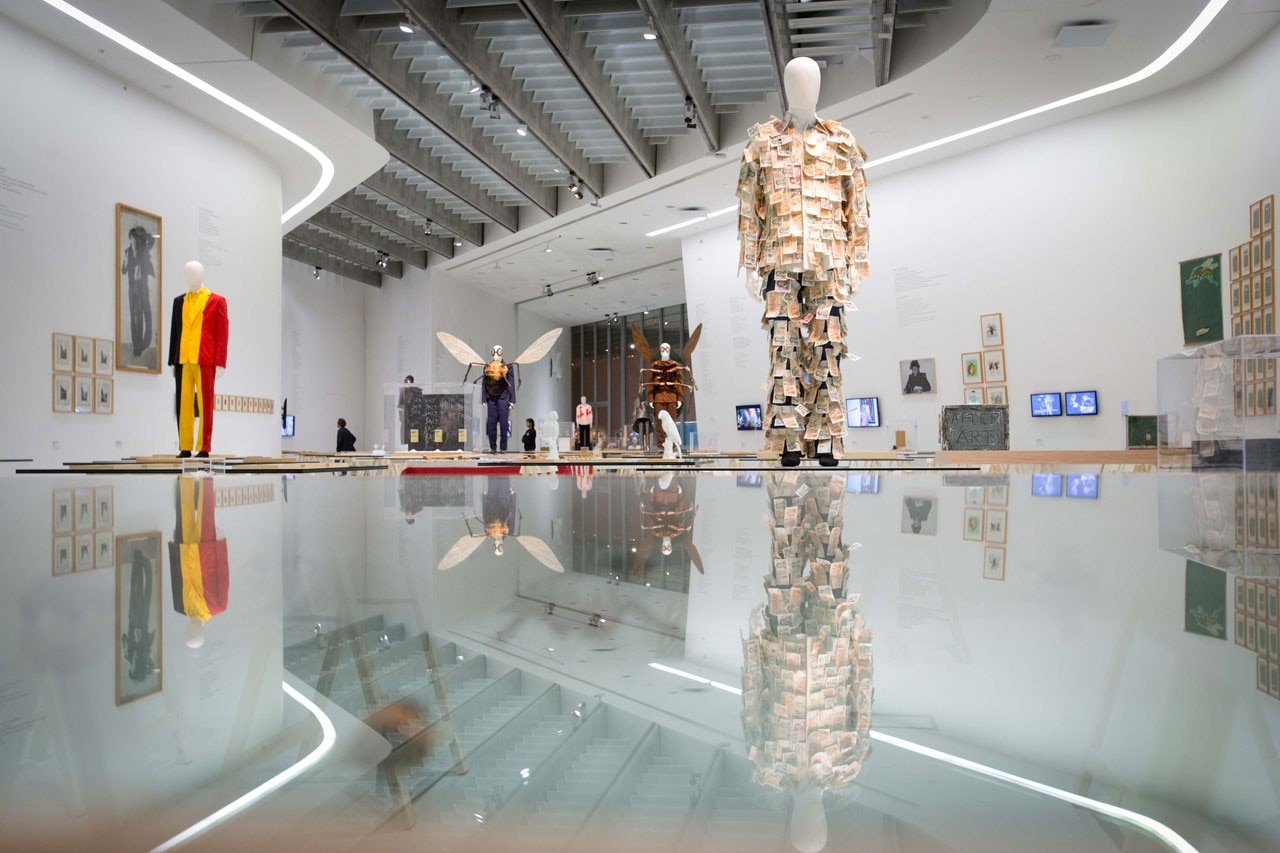Ninety-two glass panels resting on wooden trestles cadence the exhibition space, protecting but also revealing to visitors – via 800 documents left after performances – the eclectic research conducted by the Belgian artist since 1976. His is research in the most literal sense of the word; crazy research, study and exploration that always tread the fine lines separating the disciplines and employing the most varied techniques, materials and expressive languages.
Constantly at its core is the artist himself, from body to mind and both examined, scoured and indeed tormented inch by inch. Although already clear from the videos of his performances – initially body-art experiments but then complex theatre performances – the full realisation comes from observation of the expanse of drawings, notes, objects and thinking models that fill the exhibition space.
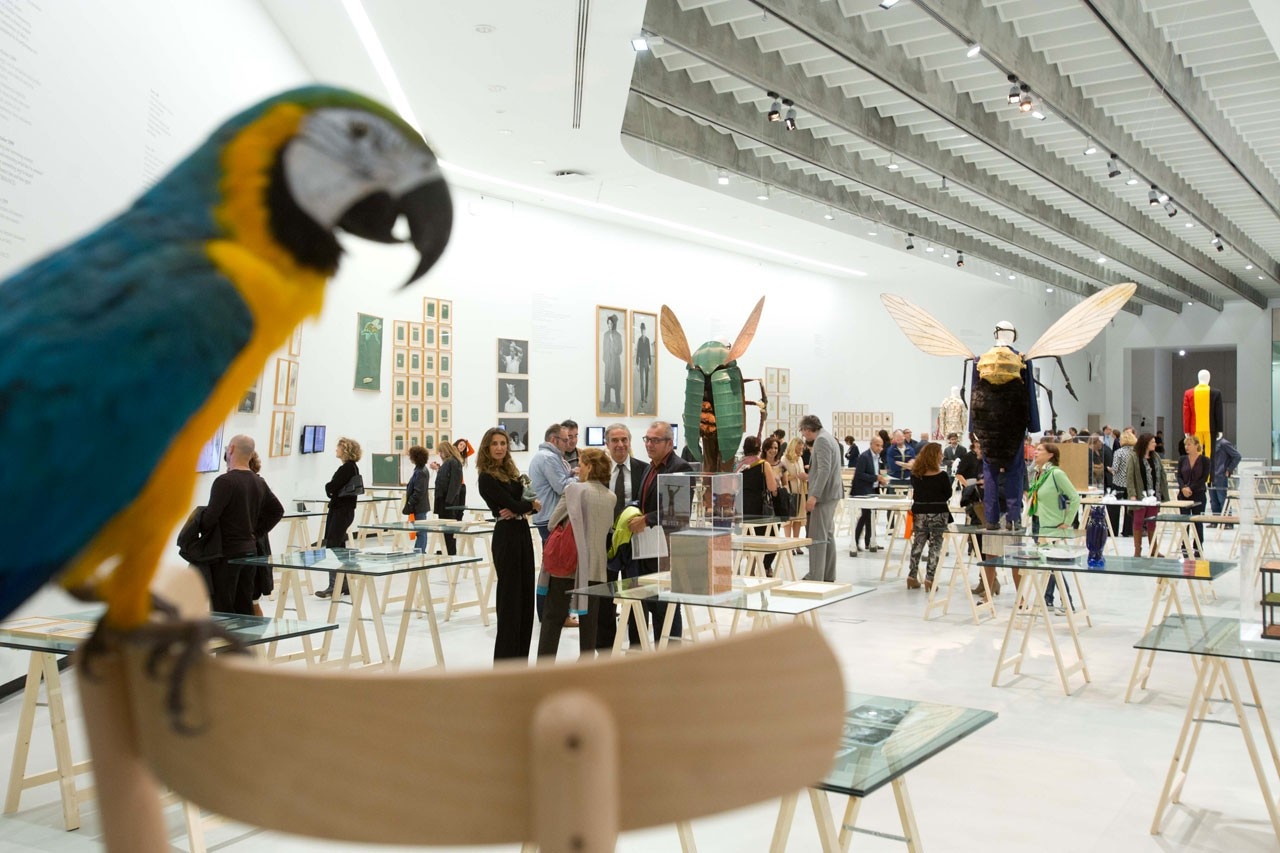
Drawing is the leading player in the exhibition. It, as nothing else, speaks to us of the artist and it, too, is performance. Fabre sees drawing as an action that closely involves the body, an action repeated obsessively to express his creative universe.
Fabre draws with ink but also with blood, sperm and urine. He records the sound of the pen passing over the paper and listens to it as if the product of a music score.
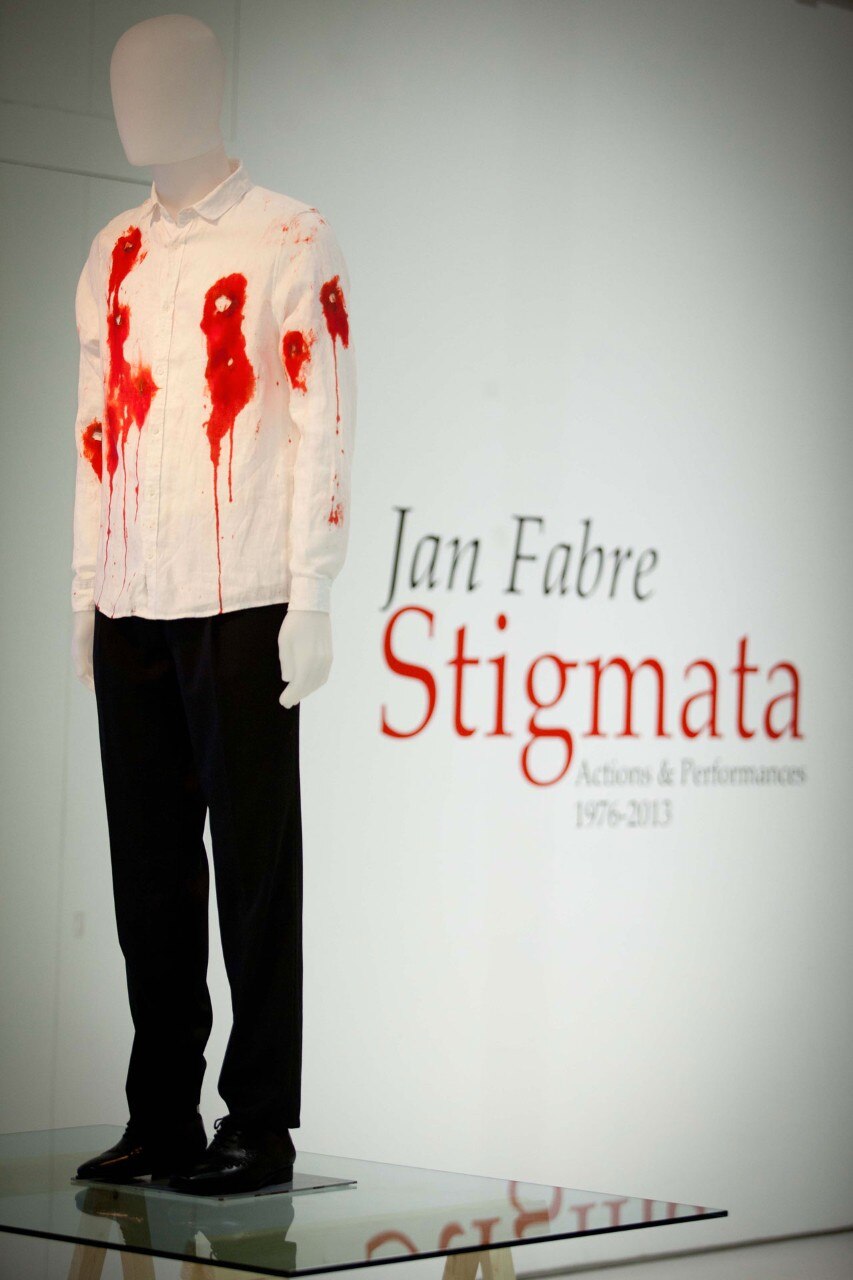
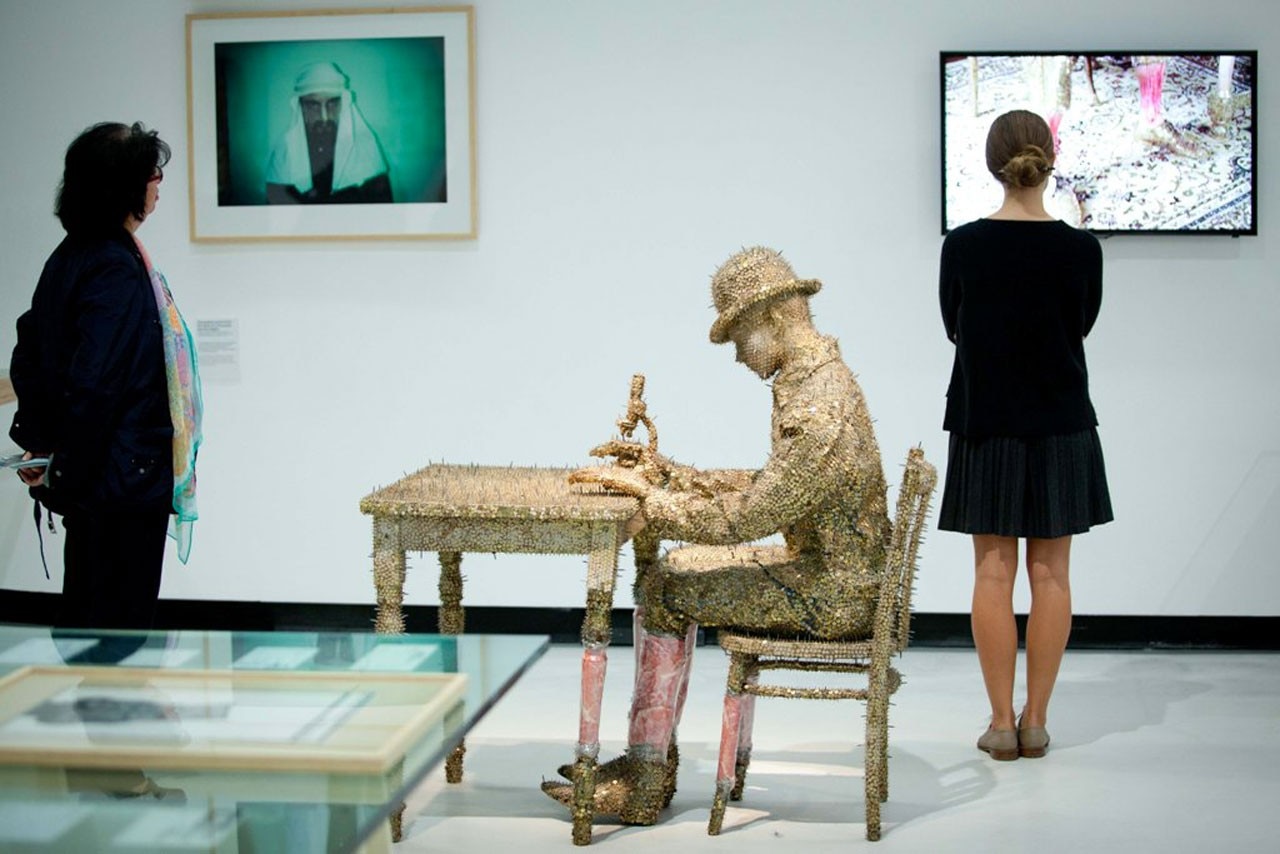
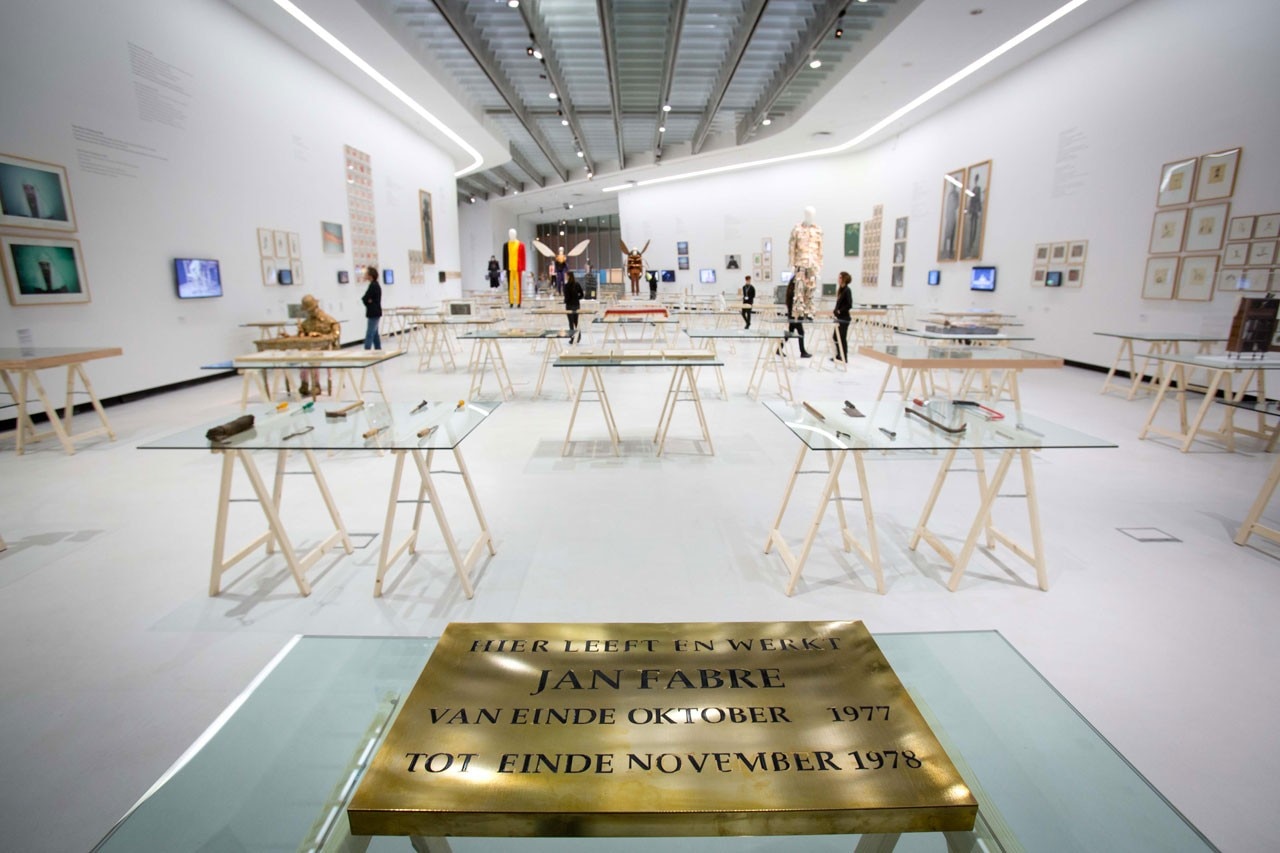
Metamorphosis and transformation become core concepts gathered from the world of nature. Fabre collects and archives insects to study them and construct fragile compositions of small bodies dissected and transformed into new creatures, a passion inherited from his great-grandfather, the famous entomologist Jean-Henri Fabre.
His focus on science – often seen in relation to art – is well conveyed in the spare and therefore effective exhibition design, conceived by Celant in collaboration with the artist. The glass tables house the drawings like scientific plates and the cases containing the models offer visitors a chance to browse the scaled reproductions of his settings, with the approach of the scholar peering through a microscope.
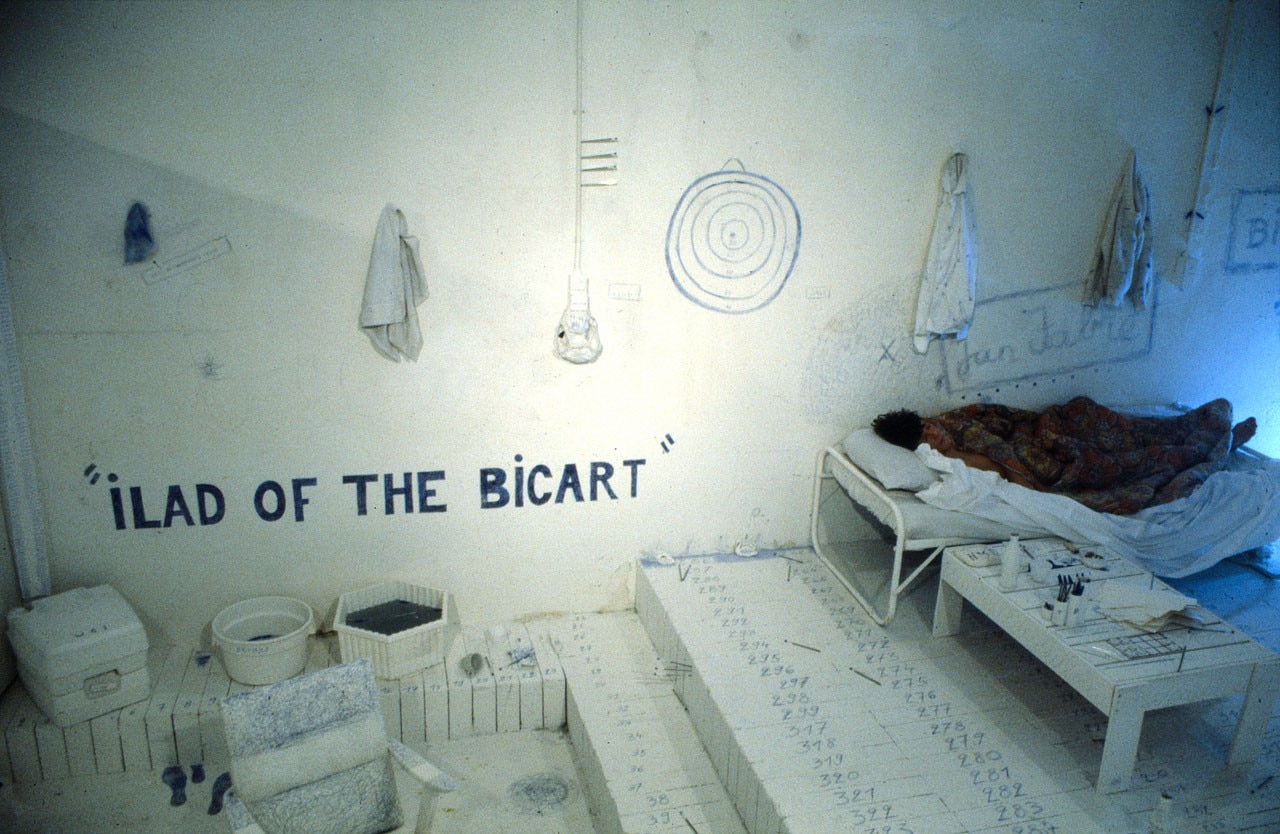
Going totally against the grain of the exuberant stage-sets that have often hosted his theatre performances, this exhibition has the feel of an archive and this is where its strength and exceptionality lie. A few of the stage props are like apparitions, such as the surreal insect costumes worn by Fabre and Ilya Kabakov for a video filmed on a New York skyscraper as they discuss philosophy and links between the art world and that of insects.
Along with the other material on show, a mention must go to a small but precious glass case equipped with magnifying glasses, with which to examine miniatures of the armour worn by the Flemish artist and Marina Abramović for Virgin/Warrior, their 2008 performance at the Palais de Tokyo in Paris.
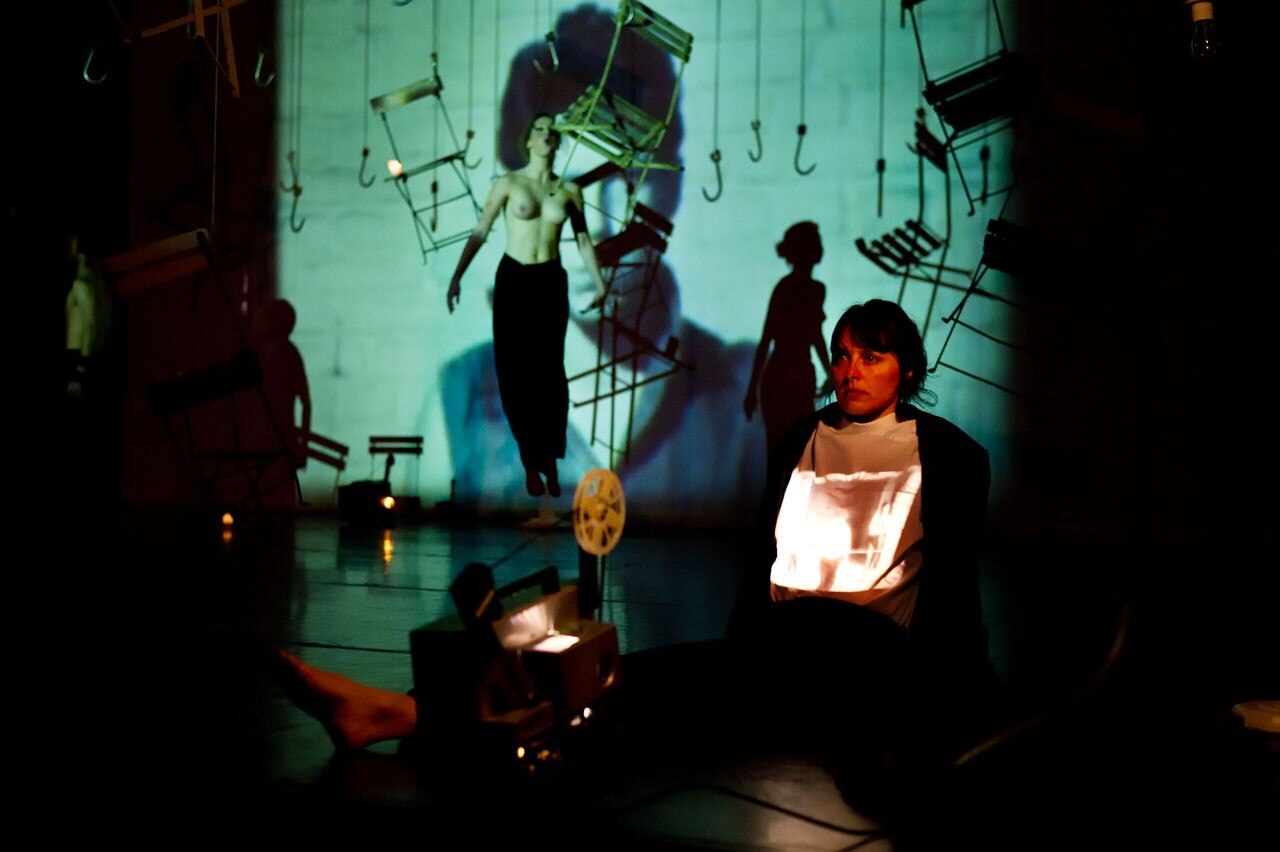
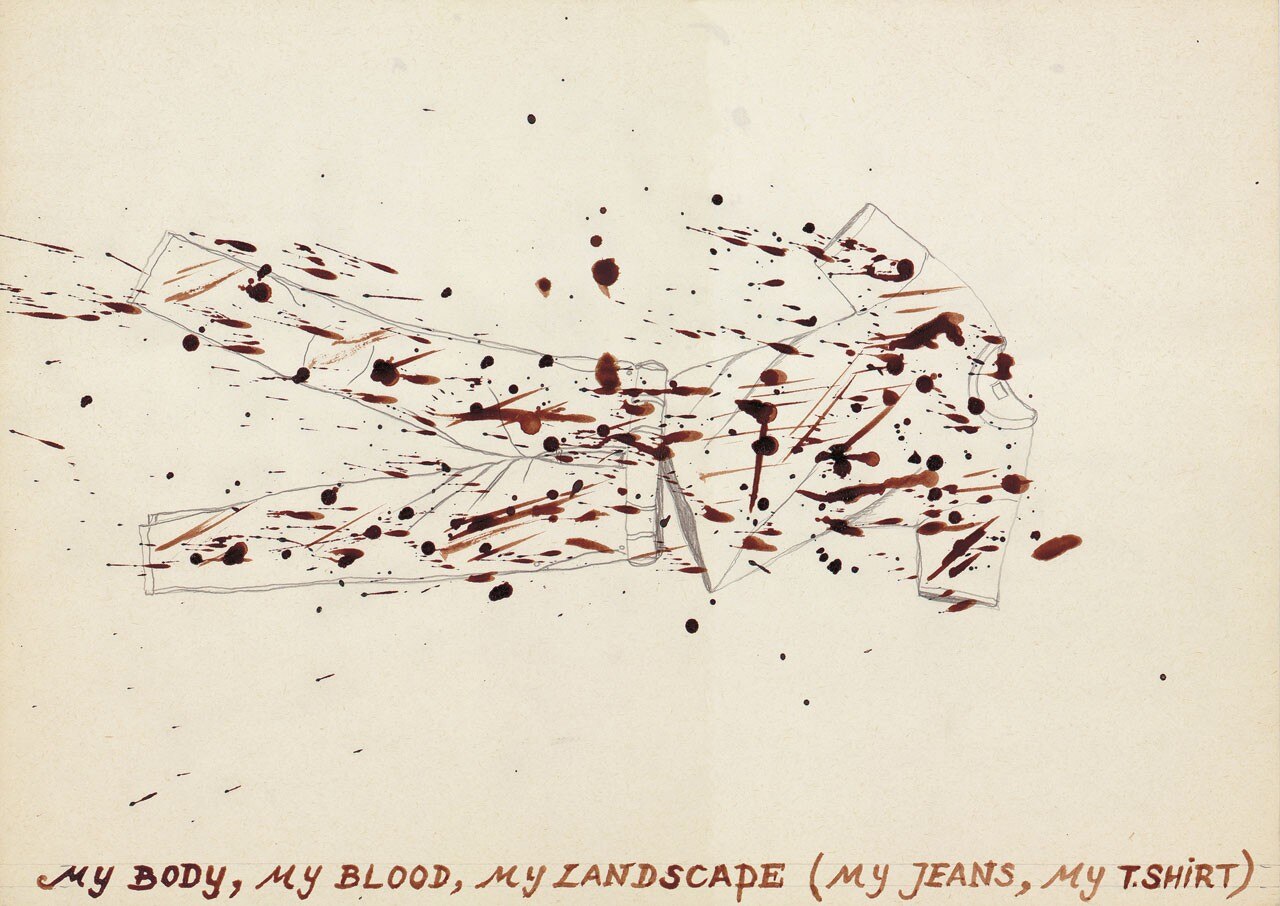
Until 16 February 2014
Jan Fabre. Stigmata. Actions & Performances 1976- 2013
curated by Germano Celant
MAXXI
via Guido Reni 4A, Rome


